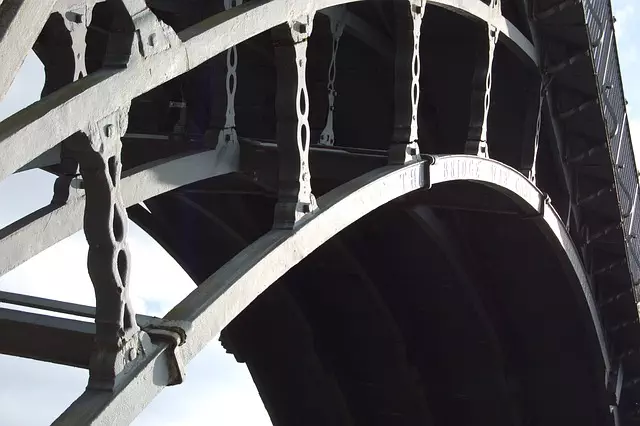Pier and beam foundations, common in seismic or unstable soil areas, require regular inspections for structural integrity. Early detection of issues like pier rot, settlement cracks, and uneven floors through professional inspections prevents major damage and saves costs. The inspection process involves assessing exterior signs, piers, beams, footings, moisture intrusion, and consulting engineers for recommendations. Repairs range from simple resealing to complex replacements, with costs varying based on damage. Regular maintenance, including proper drainage, is crucial for long-term health of pier and beam foundations, avoiding costly Residential Foundation Repair.
“Ensure the stability and longevity of your home with a comprehensive guide to Pier and Beam Foundation Inspection. This essential practice is key to identifying potential issues in residential properties built on these unique systems. From understanding the basic structure to interpreting inspection results, this article covers all aspects. Discover common problems like rot, settlement cracks, and misaligned beams. Learn the step-by-step process of an inspection and gain insights into cost estimates for repairs. Embrace proactive maintenance for seamless residential foundation repair.”
Understanding Pier and Beam Foundations

Pier and beam foundations are a common structural support system, especially in residential areas prone to seismic activity or uneven soil conditions. Unlike traditional concrete slabs, this foundation design features vertical supports, known as piers, that rise from the ground and bear the weight of the structure on top. These piers are typically made of concrete or wood and are spaced evenly around the perimeter of the building. Above the piers, a beam system runs across the length of the house, providing additional support and distributing the load evenly.
Understanding how this foundation type works is crucial when it comes to residential foundation repair. Regular inspections can help identify any signs of damage or settling, allowing for prompt addressing before more severe issues arise. Homeowners should be aware of potential problems like pier rot (in wood piers), settlement cracks in beams or walls, and uneven floors, all of which may indicate a need for professional intervention to ensure the structural integrity of their homes.
Importance of Regular Inspection for Residential Properties

Regular inspections of pier and beam foundations are crucial for maintaining the structural integrity of residential properties. Over time, these intricate support systems can show signs of wear and tear, especially in areas prone to seismic activity or heavy rainfall. A comprehensive inspection by a professional can identify potential issues such as rotted wood, weakened beams, or improper footing, which may lead to costly Residential Foundation Repair.
By conducting routine checks, homeowners can prevent minor problems from escalating into major structural damage. Early detection of any discrepancies ensures that repairs can be made efficiently, minimizing the risk of further deterioration and protecting the investment in one’s home. It is a proactive measure that saves time and money in the long run, ensuring the safety and stability of residential structures.
Common Issues Found in Pier and Beam Systems

Pier and beam systems, a common foundation type in many residential areas, can suffer from several issues over time. One of the primary concerns is uneven settling, which can result in cracks in walls, floors, or ceilings. This issue often arises due to soil conditions, improper construction, or changes in moisture levels, particularly in regions with expansive clay soils. Another frequent problem is beam rot, especially in older homes. Moisture intrusion from ground level or inadequate ventilation can lead to wood decay, compromising the structural integrity of the beams.
Regular inspection is crucial for identifying these issues early on, as they often require specialized Residential Foundation Repair techniques to address. Homeowners should look out for signs like bowing walls, uneven floors, or musty odors, which could indicate problems within the pier and beam system. Timely intervention can prevent more severe structural damage and costly repairs in the future.
The Inspection Process: Step-by-Step Guide

The inspection process for a pier and beam foundation involves a systematic, meticulous approach to assess the structural integrity of your home. It’s a crucial step in identifying potential issues that might require residential foundation repair. Here’s a step-by-step guide:
1. Visual Inspection: Begin by examining the exterior of the structure, looking for any signs of damage, cracks, or subsidence. Check for uneven floors or walls, as these could indicate foundational problems.
2. Pier and Beam Examination: Once inside, focus on the pier and beam system. Inspect each pier for stability and signs of rot or damage. Verify that beams are securely fastened to piers and aligned correctly. Look for any gaps or misalignments that could compromise structural support.
3. Foundation Support: Evaluate the condition of foundation supports like footings and anchors. Check for instability, shifting, or damage. These elements play a vital role in maintaining the overall stability of the structure.
4. Moisture Issues: Moisture intrusion can lead to significant foundation problems. Inspect for signs of water damage, mold, or mildew around the foundation walls and basement or crawl space areas.
5. Professional Assessment: For comprehensive analysis, consider engaging a qualified structural engineer or residential foundation repair expert. They have the tools and expertise to pinpoint subtle issues and provide tailored recommendations for any required repairs.
Interpreting Inspection Results and Recommended Repairs

After a thorough pier and beam foundation inspection, understanding the results is key to ensuring your home’s structural integrity. The report will highlight any issues found, such as damaged or rotting beams, settlement cracks, or uneven floors. Each identified problem comes with a unique set of recommendations for repair, catering specifically to residential foundation repair needs.
For minor issues like surface cracks, a simple resealing or re-leveling might suffice. More significant structural damage, however, may require complex solutions. This could involve replacing rotten beams, realigning piers, or even pivoting and adjusting the entire beam system. Professional contractors will provide detailed estimates for these repairs, offering both short-term fixes and long-lasting solutions to stabilize your home’s foundation.
Cost Considerations for Pier and Beam Foundation Repair

The cost of Pier and Beam Foundation repair can vary greatly depending on several factors, making it essential for homeowners to understand potential expenses before embarking on any Residential Foundation Repair. The complexity of the damage, the size of the structure, and access to the affected areas are key determiners of the overall price tag. Simple repairs involving minor adjustments or replacement of individual pier/beam components may only cost a few thousand dollars. However, extensive issues requiring structural modifications, partial foundation replacement, or underpinning can run into tens of thousands, emphasizing the need for thorough assessment and careful budgeting.
Homeowners should remember that proactive maintenance can significantly reduce these costs in the long term. Regular inspections are crucial to identifying potential problems early, preventing further damage, and ensuring a more affordable repair process. When considering Pier and Beam Foundation Repair, consulting with qualified professionals is vital for obtaining accurate cost estimates tailored to specific needs, ensuring financial peace of mind, and promoting the longevity of the home’s structural integrity.
Maintaining Your Pier and Beam Foundation Long-Term

Regular maintenance is key to ensuring your pier and beam foundation remains in top condition over the long term. This includes inspecting for any signs of damage, rot, or settling, especially after severe weather events. Addressing even minor issues promptly can prevent more serious problems that might lead to costly residential foundation repair.
One effective strategy is to implement a preventive care program, which involves scheduling professional inspections at regular intervals. These detailed assessments can identify potential vulnerabilities and allow for the early application of solutions. Additionally, proper drainage around your property is crucial; ensuring water doesn’t pool near your foundation will help mitigate moisture-related issues that could compromise its stability over time.
